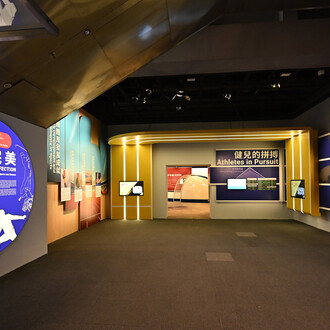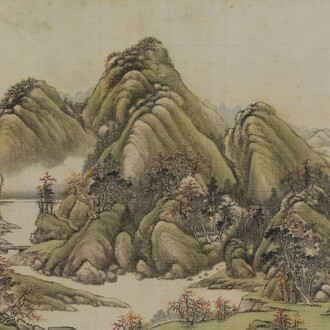Ben Brown Fine Arts Hong Kong is honoured to present Tseng Kwong Chi: Citizen of the World, a comprehensive exhibition of the Hong Kong-born artist’s pioneering body of photographic work. Tseng Kwong Chi (1950-1990) was not only a photographer but a performance artist, provocateur and documentarian who traversed the globe subversively exploring notions of cultural identity, perception and the role of the individual amidst iconic and sublime locations of the world. This exhibition brings together the artist’s iconic black and white self-portraits, a group of colour photographs that have not been publicly exhibited since 1983, rare sepia landscapes and, in collaboration with the artist’s estate, introduces a group of his photographs in a large-scale format for the first time.
Tseng Kwong Chi arrived on the gritty, intensely creative art scene of New York City in the late 1970s, where his circle included Keith Haring, Kenny Scharf and Jean-Michel Basquiat. Tseng stumbled upon his artistic identity when he arrived at an upscale, touristic restaurant to dine with his visiting parents insolently donning a Mao suit he had found at a thrift shop. While his parents were dismayed—his father had served in the Nationalist Army fighting against China’s Communist party—the unsuspecting maître d’ treated him as a foreign dignitary all evening. From that moment on, the struggling young artist assumed the identity of an ambiguous and slightly menacing Chinese statesman, appearing at exclusive events and tourist meccas in the United States and Europe, solemnly posing in his Mao costume and ID badge, with reflective sunglasses and an army-style haircut, playing upon the Western stereotypes of Asians. This exhibition includes many of the artist’s most iconic East Meets West self-portraits such as San Francisco, California (1979) and New York, New York (1979). In 1987, Tseng began working with a Hasselblad camera, its long cable manned for the first time by an assistant which enabled the artist to depict himself in vast, natural landscapes. These more contemplative yet brazen self-portraits, such as Grand Canyon, Arizona (1987) and Oshima, Japan (1988), recall the work of Caspar David Friedrich, Albert Bierstadt and the American Hudson River School painters with their earnest search for the sublime in nature.
Tseng aspired to show his silver gelatin prints in a monumental format in his lifetime, however maximum limitations of the printing medium at that time was 91.4 x 91.4 cm (36 x 36 in.). Working with Tseng’s estate, which is managed by his sister Muna, Ben Brown Fine Arts will be presenting a selection of the artist’s most iconic works, including Hollywood Hills, California (1979) and Paris, France (1983), in a striking large format of 180 x 180 cm (71 x 71 in.) for the first time. On the occasion of this exhibition the estate is creating an edition of colour self-portraits that have not been exhibited since 1983, depicting the artist partially obscured between the American and Chinese flags, raptly examining a little booklet of Mao quotations, as in East Meets West Manifesto (1983). These photos were not only a reflective examination of his own background and experiences but a metaphor for the anxious geopolitical climate of the time. The gallery will also be presenting Tseng’s vast American landscape works in a special sepia edition. Lastly, this comprehensive exhibition will include Tseng’s documentation of the creative denizens of the artistic underground at the infamous downtown New York City nightclub, the Mudd Club.
Tseng Kwong Chi, the son of exiled Chinese nationalists, was born in Hong Kong in 1950. He developed an interest in photography at a young age when his father gave him his vintage Rolleiflex camera. At the age of 16, Tseng and his family emigrated to Canada, where he attended universities in Vancouver and Montreal, before moving to Paris where he studied art and photography at the Académie Julian. In 1979 he settled in New York City where he found his artistic milieu in the East Village. Tseng viewed himself as a citizen of the world: equally comfortable speaking French, English or Chinese, neither an insider nor outsider wherever he went, using his concocted identity as an instrument to appraise the world around him. Tseng’s works feel uncannily contemporaneous both in style and content and have greatly influenced generations of artists that followed. The work of Tseng Kwong Chi is in numerous public collections, including the Solomon R. Guggenheim Museum, New York; the Walker Museum of Art, Minneapolis; the San Francisco Museum of Modern Art and the Museum of Fine Arts, Houston. Tseng’s photographs were shown publicly in China for the first time at the 2004 Shanghai Biennale.



















